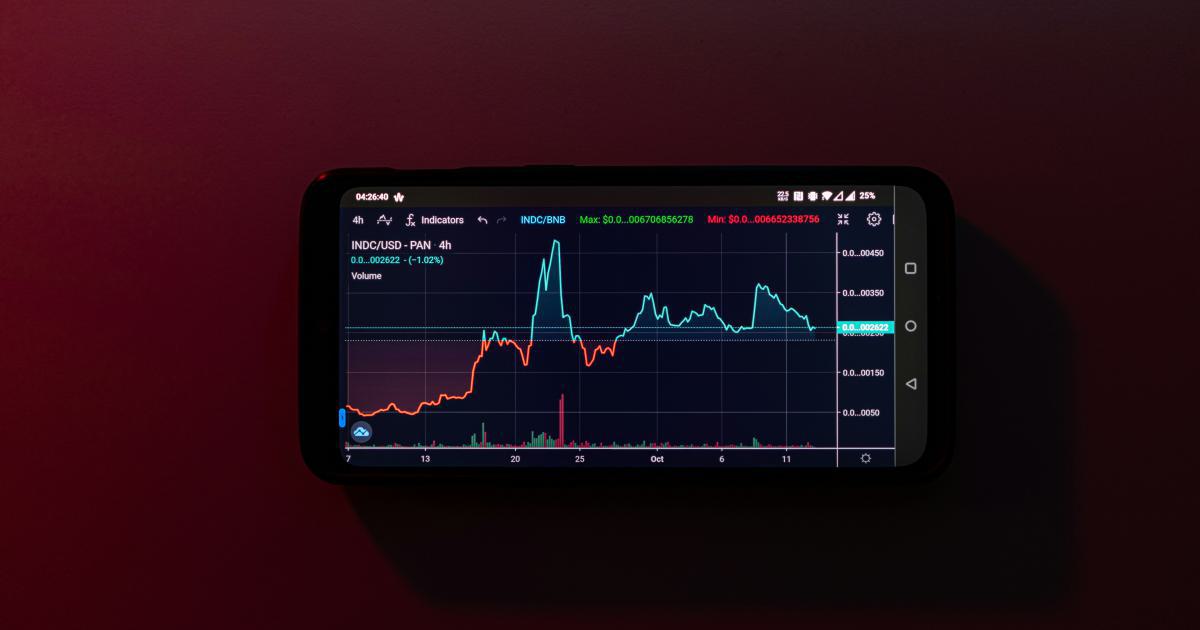Trend Following Trading Journal: Track Your Success

Opening Hook
It started on a rainy Tuesday morning when Alex, a seasoned trader, stared at the flickering screen of his trading workstation and wondered, "Can a meticulous trend following trading journal really be the key to sustained success?" In the fast-paced world of trading, where every tick could mean profit or loss, Alex’s discovery of a strategy that combined systematic analysis with emotional clarity changed everything. Today, we dive into the world of a trend following trading journal—a method that not only organizes your trade history but also tells a fascinating story of perseverance, insights, and unexpected market twists. Within the next chapters, we embark on a journey that blends data with narrative, turning charts and statistics into a living, breathing narrative of triumph and trial.
At the core of every successful trader's strategy lies an unwavering belief in detailed self-assessment. A well-kept trend following trading journal serves as both a diary and a blueprint. For traders like Alex and countless others, maintaining this journal isn’t just about logging trades; it’s about understanding patterns, recording emotional states, and learning from every tick of the clock. This article will guide you through the creation, maintenance, and transformation of your trading journey into an insightful narrative of success.
“Every line in the journal isn’t just a record, but a lesson learned in the school of the market.”
– Alex, experienced trader
The Journey
Trading isn’t a straight path—it’s a labyrinth of constant change, unexpected detours, and sudden clarifications. Let’s embark on our narrative journey of the trend following trading journal, as we explore how logging your trades can transform abstract numbers into actionable insights.
Stop 1: The Spark of Curiosity
Alex’s journey began with a simple yet profound realization: a trade is more than just an entry and exit number—it is an emotion, a decision, and a slice of life. On that rainy Tuesday, while scanning market trends, he pondered deeply about the nature of his trading strategy. Was he erratic, intuitive, or methodical? As the rain whispered against his window, the idea of writing down every trade—the reasons behind them, the emotions felt, the context of market conditions—suddenly made sense.
Alex started his journal with a basic format:
- Date and Time
- Entry and Exit Points
- Rationale Behind the Trade
- Emotional State at Entry and Exit
- Lessons Learned
This seemingly simple idea soon grew into a sophisticated method for clarifying his trading decisions. When the market moved against him, the journal served as a mirror, reflecting his unfiltered emotions and strategic mistakes. On days of triumph, it celebrated his keen insight into trends.
The concept of a trend following trading journal is not unique to Alex. Many successful traders have documented their journeys, each entry evolving into small fragments of their trading lore. Each record served as a cross-check against impulsive decisions and allowed reflective adjustments. The process was akin to setting the stage for a personal narrative—one where every failure was a stepping stone toward profound mastery.

Stop 2: The Role of Data and Detail
In a world ruled by numbers, the devil is truly in the details. As the days turned into weeks, Alex made a habit of including detailed statistical data in his journal. He began tracking additional variables such as:
- Volumes traded
- Moving averages and their interactions
- Relative Strength Index (RSI) readings
- Market sentiment indicators
By coupling technical analysis with anecdotal insights, Alex transformed his trading log into a comprehensive data repository. It was here that the importance of key metrics came to the fore. One day, after a series of uncharacteristic losses, he noticed that his emotions were clouding his judgment—particularly when a key technical indicator signaled a potential reversal which he either didn't heed or misinterpreted.
“Detail is the seed from which insight grows. Every statistic, every detail, constructs the larger picture of the market’s narrative.”
– Alex
This blend of hard numbers with his personal insights provided Alex with a robust tool for self-assessment. By systematically reviewing entries over weeks, he identified recurring patterns: moments of overreaction due to fear and times of greed-induced impulse. These insights paved the way for a major shift in his strategy. The trend following trading journal was metamorphosing from a mere log into a sophisticated mirror that reflected not just the technical market movements but also the psyche behind each decision.
The effectiveness of his approach led him to join online trading communities and forums where he shared his findings and learned from others. The dialogue with fellow traders enriched his perspectives, allowing him to calibrate his emotional responses and maintain a clearer strategic focus.
Stop 3: Character and Dialogue
Amid the tumult of market swings, characters emerged—traders who shaped not just market trends but also impacted each other with their insights and cautionary tales. Consider the dialogue between Alex and his mentor, Sarah, a veteran trader with decades of market experience.
Sarah often said,
“A trend following trading journal is your personal advisor. It tells you when to stay the course and when to reconsider. Think of it as having a conversation with your future self.”
Their conversations were both candid and instructive:
- Alex: “I’m noticing that I tend to hold on too long after a winning trade, hoping for more profit.”
- Sarah: “That’s because you get caught up in the adrenaline of success. Let your journal remind you of your set rules, and trust your strategy.”
- Alex: “Sometimes it’s hard to decipher if my failure was due to market unpredictability or my own emotion.”
- Sarah: “That’s why details matter. Quantify everything so that you have evidence in your journal. Evidence leads to clarity.”
Through these exchanges, it became evident that the journal was not just a log of numbers but a dynamic conversation tool. It encouraged introspection and honest critique, making it an indispensable part of any disciplined trading strategy. Other traders in Alex’s circle, like Michael and Rebecca, also shared how their journals had been instrumental in navigating turbulent market phases. Their success stories, filled with moments of doubt followed by breakthroughs, reinforced the notion that robust record-keeping could empower a trader to outthink and outmaneuver the market.
The interactions echoed across trading platforms, as many echoed Sarah’s advice: “Let your journal speak for you when emotions cloud your vision.” Even casual remarks in a coffee break turned into profound epiphanies when reflected upon later in detailed journal entries. This collective narrative built a culture of transparency and continuous learning among traders.

Stop 4: Plot Twists and Unexpected Insights
Just when the path seemed straightforward, the market introduced an unexpected twist. A sudden geopolitical event sent shockwaves through global markets, knocking many traders off balance. Alex’s journal entries from that week were nothing short of dramatic. Records showed chaotic entries, with notes on rapid shifts in risk tolerance and fleeting glimpses of panic intermingled with calculated decisions. The journal, which had been a steady repository of methodical strategies, now became a battleground for raw market emotions.
Amid the chaos, Alex recorded:
- Uncertainty as a consistent theme.
- Notable deviations from his usual trading behavior.
- Unexpected correlations between market uncertainty and technical indicators that he’d long sidelined.
This period was marked by a vital learning curve. It showed him that even the most structured approach could be overwhelmed by external shocks. However, the journal allowed him to step back and understand that every plot twist in the market, no matter how unexpected, held a lesson. Alex began to analyze these deviations rigorously, breaking them down into:
Market-driven factors.
Emotional responses.
Strategy misalignments.
Each layer revealed a nuanced picture of market dynamics, demonstrating that sometimes the best-laid plans needed to be flexible enough to adapt to reality. Instead of being disheartened, Alex embraced these surprises as pivotal data points in his trading narrative. This period not only redefined his strategy but also reinforced the absolute necessity of having a detailed trend following trading journal.
The twist also served as a turning point among the broader trading community. Online discussions surged with traders debating whether it was a temporary blip or a permanent shift in market sentiment. This rich dialogue, fueled by data and personal insights logged in countless journals, led to new strategies that integrated both short-term caution and long-term perspective. The communities became hubs of innovation, where traditional methods met modern, agile techniques in real-time.
“Unexpected turns in the market are not anomalies but vital data—each shock is a call to refine your strategy further.”
– Sarah, Mentor
Stop 5: The Climax of the Journey
After navigating through calm and stormy markets, the narrative in the trading journal reached a crucial point—the climax. This was the moment when accumulated insights began to reveal a significant pattern. Alex discovered that by correlating his emotional trends with technical performance, he could forecast potential market movements more reliably. For example, he discovered that heightened emotional entries, especially those tied to fear, often coincided with market bottoms, while overconfidence frequently preceded a decline.
This epiphany required revisiting every journal entry. Alex began to see his journal as a living testament to iterative improvement. Drawing from extensive data and rich personal narratives, he formulated a set of actionable insights:
- Consistency is key: Trading based on a well-documented strategy minimizes emotional errors.
- Emotional awareness: Recognizing the emotional context of each trade can provide early warnings on potential overextensions.
- Data-backed adjustments: Historical data in the journal can help adjust strategies in real-time, aligning with prevailing market sentiments.
He also introduced periodic “reflections” into his journal, where he stepped back and reviewed the cumulative entries over a month. These review sessions offered a holistic view of the trends not just in market behavior, but in his own decision-making process. The trading journal thus transformed into a comprehensive toolkit—one that enabled proactive adjustments rather than reactive measures.
Alex’s breakthrough wasn’t isolated. Across the trading world, many began to share similar experiences, where disciplined record-keeping helped them pivot during market uncertainties. The recognition that a trend following trading journal could deliver both tactical and strategic insights became a rallying point for traders looking for sustainable success.
“In the climax of your trading journey lies not just profit, but the wisdom of experience. Your journal is the vessel that carries that wisdom forward.”
– Alex
Stop 6: Resolution and Future Implications
With the climax reached and critical insights gained, the final leg of our journey was about resolution—tying together the narrative of rigorous tracking, analysis, and emotional management. Alex’s trading journal had evolved over time from a simple ledger to a multidimensional guide that informed every future decision. His documented journey provided him with a step-by-step manual to navigate market uncertainty, making him a more confident, data-driven trader.
In the resolution phase, the focus shifts to practical takeaways that any trader can adopt:
Commit to Consistency:
Integrate Emotional Metrics:
Review and Reflect:
Adopt a Continuous Learning Mindset:
As Alex concluded his reflective sessions, he realized that his journey, while deeply personal, was also a microcosm of the broader trading experience—a tapestry woven from threads of calculated risks, unexpected turns, and moments of clarity. His journal didn’t just document his past; it illuminated the path for future endeavors. This realization embedded in him an unshakable belief that no matter how volatile the market, a disciplined approach backed by a well-maintained trend following trading journal was his most reliable ally.
In the evolving landscape of trading technology and automation, the personal touch of a detailed trading journal stands as a testament to human perseverance. Digital tools may provide real-time analytics and instant data, but the thoughtful reflections captured on paper (or digital notes) carry an irreplaceable depth of insight that algorithms might miss. Traders who blend technology with the nuanced understanding recorded in their journals are best positioned to stay ahead of the curve.
Looking forward, the role of trading journals is bound to grow even more indispensable. Imagine a future where artificial intelligence assists in pattern detection within your journal, suggesting timely interventions before emotions take over. The juxtaposition of advanced tech and personal discipline could lead to breakthroughs in risk management and strategy development that were previously out of reach.
“Every trade is a story, a lesson in risk, reward, and resilience. Embrace your journey fully—the highs are as instructive as the lows.”
– Sarah
The insights gleaned from Alex’s narrative resonate widely:
- For the novice trader: Start small, with clear, concise entries. Focus on learning rather than fast profits.
- For the experienced trader: Use your journal as a diagnostic tool to fine-tune strategies and understand market psychology.
- For the community: Share insights and engage in dialogues. The collective intelligence derived from multiple journeys can lead to revolutionary trading improvements.
Before you close your journal for the day, consider these final reflections:
- When you document your trades with both precision and passion, you’re not just chasing numbers—you’re sculpting your own strategy for success.
- Each page of your journal builds a foundation for future success. Future you will thank you for the detailed notes written today.
With this resolution, the narrative of a trend following trading journal comes full circle—a compelling journey that transforms routine record-keeping into a strategic compass in the turbulent world of trading.

The Future of Trading Journals
What might tomorrow hold for the dedicated trader? Innovations in automation, data analytics, and artificial intelligence promise to reshape the trading landscape. Yet, amid this evolution, the core principle remains unchanged: a detailed, reflective trend following trading journal is a treasure trove of insight that bridges experience with strategy.
Looking ahead, envision a digital platform where your journal is integrated with real-time sentiment analysis tools. Such a system could:
- Alert you when your recorded emotions begin to skew your decision-making.
- Provide comparisons between your historical entries and current market trends.
- Suggest refinements to your trading strategy based on accumulated wisdom.
Imagine sitting at your desk, coffee in hand, while your personalized dashboard summarizes the week’s market highs and lows—each metric accompanied by reflective notes from your journal. The synthesis of technology and tradition creates a robust strategy, underscoring the essence of disciplined trading. It’s a future where the dynamic interplay between human judgment and machine precision leads to smarter, more agile decisions. With every journal entry, you lay a brick in the foundation of a resilient trading career.
“The future is a collaboration between your own insights and the power of technology. Use your past to shape a smarter tomorrow.”
– Alex
The journey of a trend following trading journal is far from linear. It is iterative, rich with lessons, challenges, and triumphs. Every trade logged represents more than a number—it’s a snapshot of your evolving strategy and emotional state. And as you continue to write your trading story day after day, remember that growth often emerges from the delicate balance between data and emotion, structure and spontaneity.
Before making your next trade, ask yourself: What do my past entries reveal? How have I evolved? Let your journal guide you as you navigate future market shifts, and let every recorded thought serve as a stepping stone toward a more resilient, insightful trading practice.

In conclusion, a well-crafted trend following trading journal is more than a tool—it’s a trusted companion on your journey through the ever-changing landscape of financial markets. Whether you’re a newcomer eager to learn or an experienced trader seeking to refine your approach, the disciplined practice of journaling offers a pathway to enduring success.
Embrace your journey with open eyes and a determined spirit, for in the numbers and the notes lies the wisdom to transform risk into opportunity and uncertainty into a roadmap for success.
Final Reflections
As our narrative journey draws to a close, consider this: the market will always present its unpredictable challenges, but a trend following trading journal equips you with the insight to navigate them confidently. Future traders will no doubt lean on the detailed pages of their journals to steer them through stormy markets and toward clearer horizons.
Take these key points with you:
- Consistency in journaling builds a foundation for informed decisions.
- Absolute transparency in your entries—data and emotion alike—fosters continuous improvement.
- Reflect regularly to transform everyday trading into a strategic art.
Let the story of Alex and the collective wisdom of traders worldwide inspire you to harness the power of the trend following trading journal. As you chart your future trades, remember that every entry written today can light the path to success tomorrow.
“Document, reflect, and learn. In the intricate dance of the market, your journal is your most faithful partner.”
– Sarah
Your trading journey is an ongoing story. May each page of your journal reveal insights that empower you to face the future with clarity, courage, and a deep understanding of your own evolving strategy.
Happy journaling—and even happier trading!
Unlock Your Trading Potential with Edgewonk
Struggling to improve your trading performance? Edgewonk's advanced analytics tools are designed to give you the edge you need.
With detailed trade journaling, robust strategy analysis, and psychological insights, you'll gain a comprehensive understanding of your strengths and weaknesses. Don't miss out on this game-changing opportunity.
Unlock Your Trading Potential with Edgewonk
Struggling to consistently achieve profitable trades? Edgewonk's cutting-edge analytics empower you to analyze your performance and refine your strategies.
Our advanced trading journal software provides detailed insights, psychological analysis, and personalized recommendations tailored to your unique trading style.
Annika Eriksson
19 posts written
Driven by her passion for empowering individual traders, Annika Eriksson is a renowned educator, offering practical strategies and actionable insights for successful trading.
Read Articles



